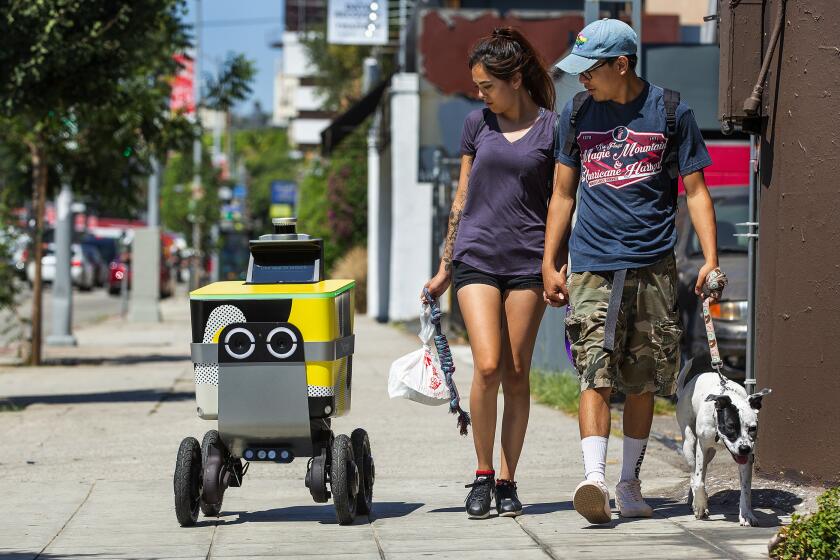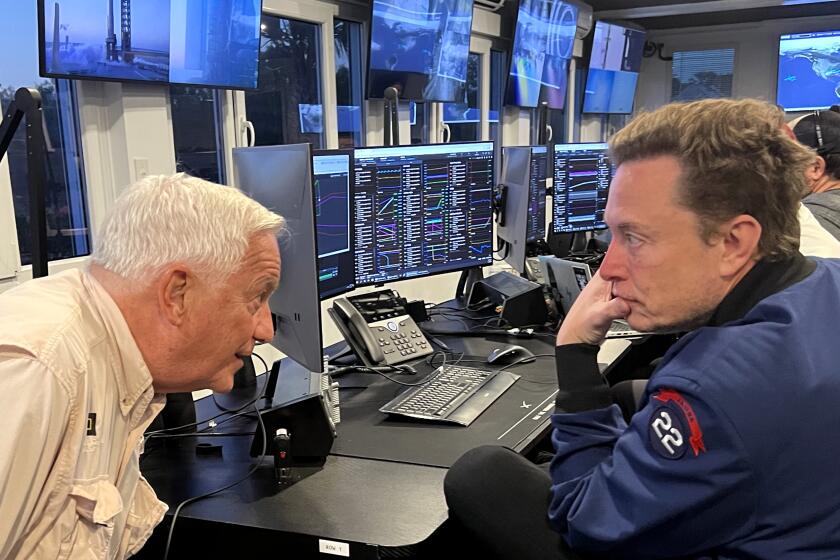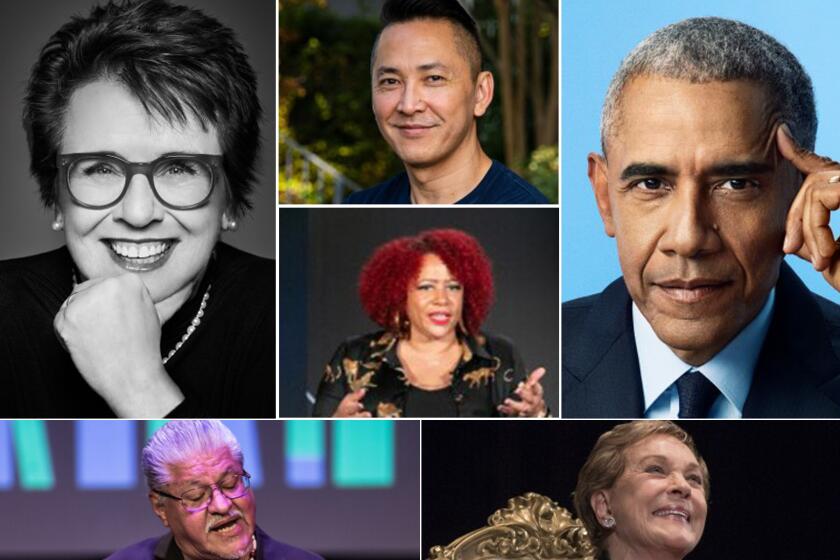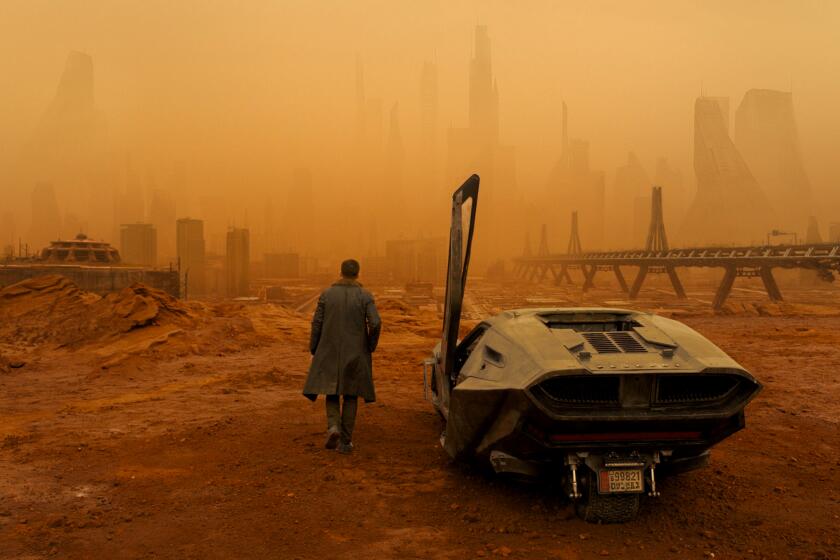Why this AI pioneer is calling for ‘human centered’ computing
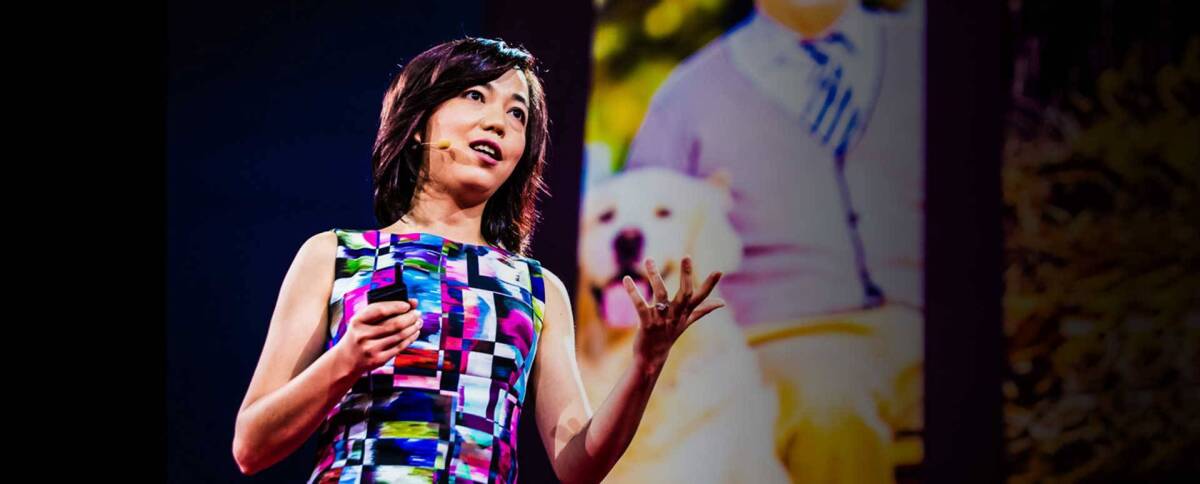
Fei-Fei Li, author of ‘The Worlds I See’ and co-director of Stanford’s Human-Centered AI Institute, joins the L.A. Times Book Club Nov. 14.
Fei-Fei Li was a high school junior in Parsippany, N.J., when she turned to her math teacher for help — but not with math. As a recent immigrant from China, she was struggling to adapt to a new language and culture while working long hours at a restaurant to help her parents make ends meet.
She asked her teacher for book recommendations and then surprised him by revealing some of her own favorite authors, including Mark Twain, Charles Dickens and Ernest Hemingway — all of whom she had read in translation.
The encounter, described in Li’s new memoir, “The Worlds I See: Curiosity, Exploration, and Discovery at the Dawn of AI,” helped spark a lifelong connection with her teacher, the late Bob Sabella, whom she credits as a mentor and surrogate family member. Sabella’s guidance helped launch her on a path that led to a degree in physics from Princeton University, a PhD, and her current position as a professor at Stanford University. She has become a pioneer of modern artificial intelligence, and a leading voice calling for a “human centered” approach to the rapidly developing technology.
On Nov. 14 Li joins the L.A. Times Book Club to discuss “The Worlds I See” as part of a live streaming conversation about the growth of AI and its impact on humanity.
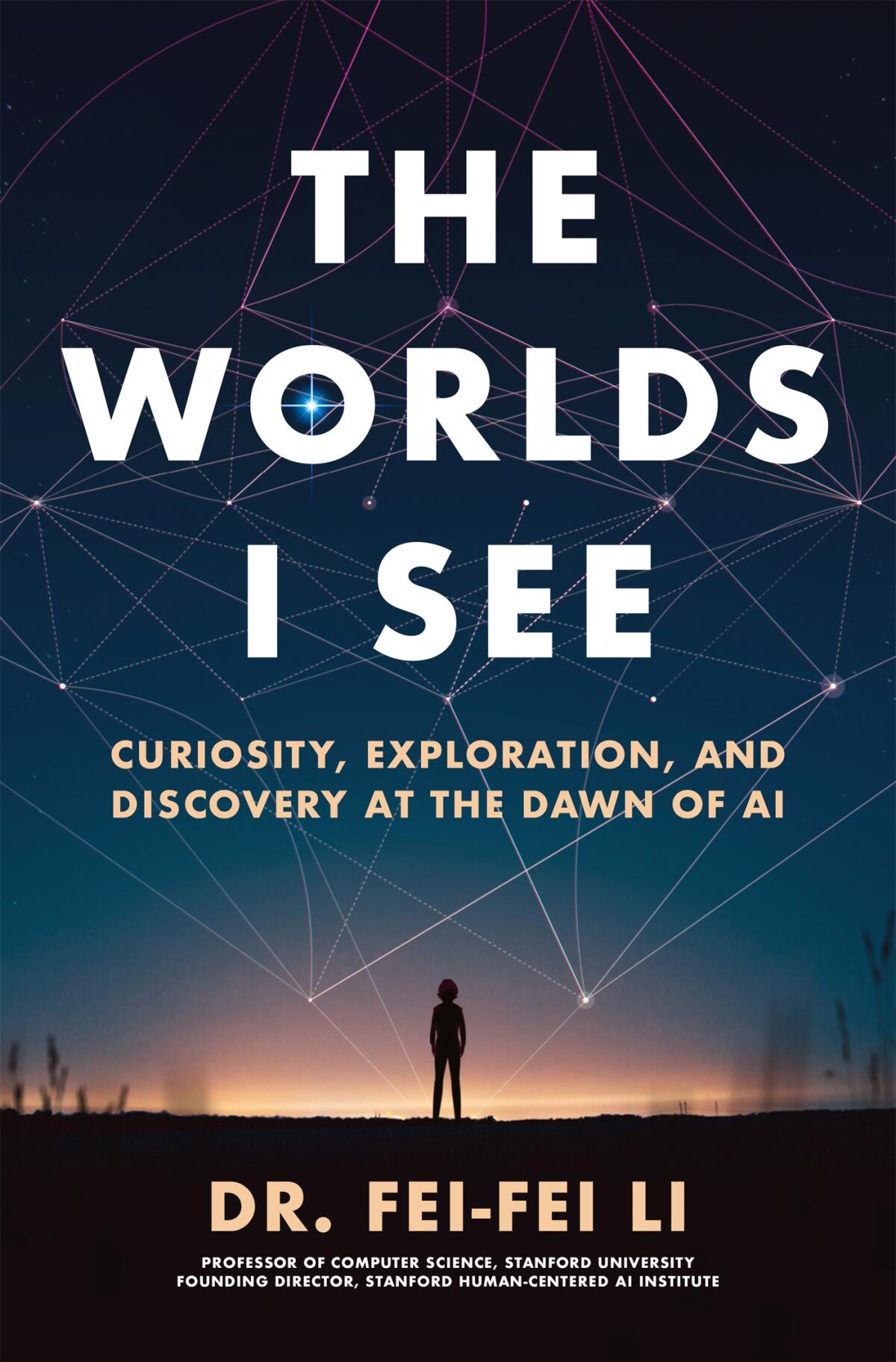
Li said she initially drafted her book with the goal of sharing her fascination with the science of artificial intelligence. When she showed the manuscript to a Stanford colleague, he persuaded her to tell more of her personal story as an immigrant and a woman of color, especially to reach young people “who don’t see their own image in today’s Silicon Valley world.”
“Honestly, I’m a pretty shy person to write my own journey, but he really convinced me there is a voice to be heard on behalf of so many voices that are not heard,” Li said. “So I rewrote the book, and this time, we adopted a double helix structure, (reflecting) the true fact that my own coming of age coincides with AI’s coming of age.”
Li is best known as the lead researcher behind the development of ImageNet, a database of more than 14 million images developed as a way to help computers “see” and describe the world. The database, which took years to build, led to a breakthrough that has been described as a “Big Bang” moment that helped spark today’s boom in artificial intelligence.
As Li describes it in her affecting memoir, the project was a classic tale of scientific trial and error, and success was far from certain. Researchers were only able to complete the massive project when they hit upon the idea of enlisting more than 48,000 human contributors from around the world to label and categorize each image, using the Amazon Mechanical Turk crowdsourced workforce platform.
It seems hard to believe today, but when Li and her team completed the ImageNet project in 2009, the field of artificial intelligence was a nearly forgotten academic backwater, and publication of their database did little to change that — at first. But the development of powerful computer processors, originally designed to render video game graphics, allowed another team to apply a so-called neural network and develop an algorithm that used ImageNet to train computers, resulting in a massive leap in their ability to make sense of the visual world.
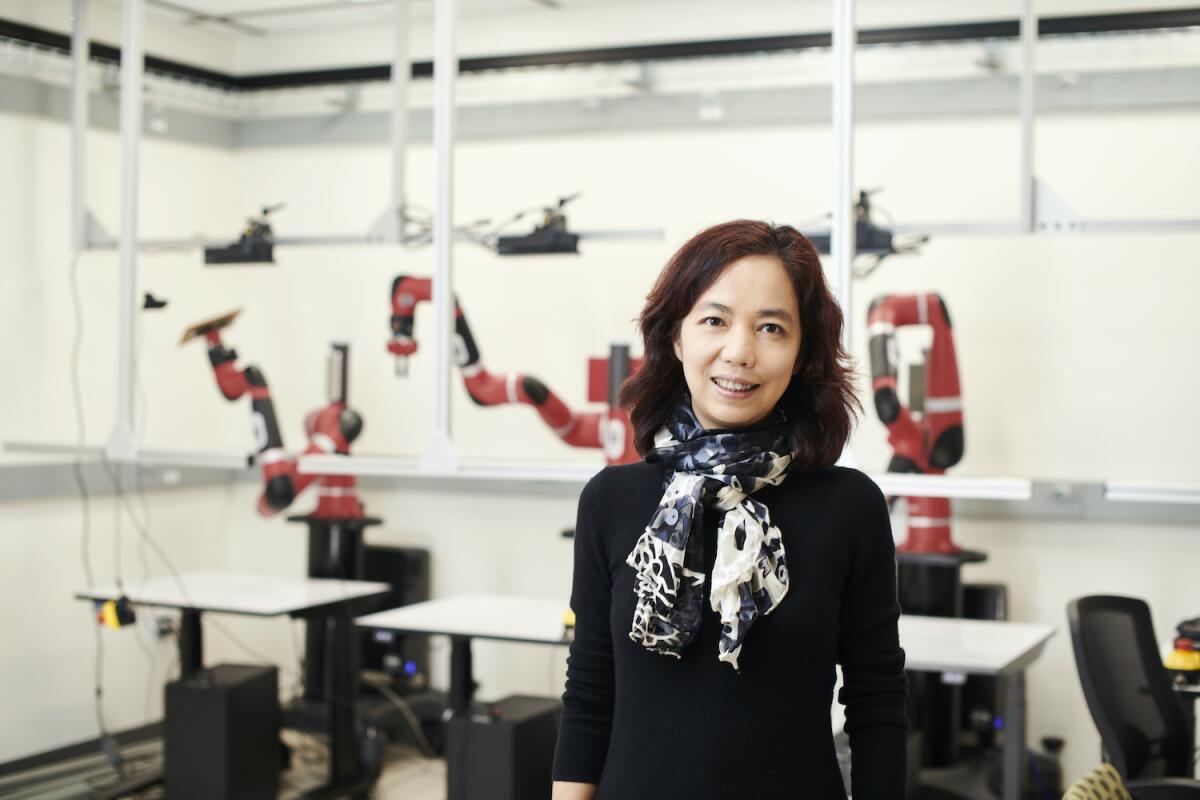
Li was born in Beijing but raised 1,000 miles away in the Sichuan province capital of Chengdu. (She credits her whimsical father with coming up with her first name, which is based on the Mandarin Chinese word meaning “to fly.”) While her upbringing in China was solidly middle-class, her mother’s prospects were limited by a family association with the defeated anti-Communist Kuomintang party. By 1989, the year the government put down the Tiananmen Square protests, Li’s family was making plans to emigrate.
In 1992 Li started her new life in the United States. She was 15. “For a Chinese student raised in the schools of Chengdu, my first days at Parsippany High School were an assault on the senses,” she writes. “The mood was manic and unsteady, and everything around me was brighter, faster, heavier, and noisier than the world I left behind.”
When it comes to its permeance in our everyday lives, “technology is maybe the smallest part in the equation,” Times columnist Brian Merchant says.
Li also had to adapt to cramped living conditions, her bed jammed into a gap between the kitchen and dining area in the family’s one-bedroom apartment. One thing that hadn’t changed was her passion for physics, and she found herself drawn to American history as well, with its promise of rights and freedoms that had only been whispered dreams in her native China. Even so, she describes her decision to apply to Princeton, the onetime home of her hero Albert Einstein, as something of a lark, given her family’s severe lack of resources.
When the acceptance letter came, it was math teacher Bob Sabella who helped her understand that Princeton was offering her nearly a full scholarship. It was also Sabella and his wife, Jean, who helped Li’s struggling family by generously lending money to help them buy a dry-cleaning business, an enterprise Li figured would be a good fit for her mechanically minded father and her chronically ill mother. On weekends home from college, she helped her parents at the shop.
From Princeton, Li continued on for graduate work at Caltech, which she chose in part to benefit from advisors who shared her interest in combining the studies of computation and neuroscience — a pathway toward understanding how people see and understand the world, and how computers can approach or mimic the abilities of the human brain.
By the time Li’s ImageNet project was complete, Li had joined the faculty of Stanford, where she currently serves as the Sequoia Professor of Computer Science and co-director of the Stanford Human-Centered AI Institute. She also co-founded AI4ALL, a nonprofit dedicated to expanding opportunities to study computing for underrepresented youth, including girls, people of color and people from economically disadvantaged backgrounds, with an ultimate goal of creating AI systems that are more ethical and “human centered.”
While Li is inspired by the human brain, “the most intricate thinking machine of the universe,” she says the technology of artificial intelligence needs to be understood as very different and complementary — an enhancement, rather than a replacement.
Walter Isaacson reveals how he shadowed Elon Musk and details billionaire’s brutal treatment of workers, impulsive decisions and chaotic romantic life in a new biography.
Li is far from a blind optimist about the potential of artificial intelligence, although she is not among the hundreds of AI scientists and other notable figures who have signed a statement warning of “the risk of extinction from AI,” comparing the potential danger to pandemics and nuclear war.
Nonetheless, she rapidly ticks off some of the threats: privacy issues, upheavals in the labor market, systemic bias, a lack of government oversight, and the undermining of democracy by AI-generated misinformation and disinformation. All those issues “are big and complicated and more immediate than an existential, threatening robot,” she says. If the media and policymakers become obsessed with the threat of a rogue machine from some science fiction movie, then “we’re really missing the opportunity of galvanizing our society to take on responsibility and human agency to tackle the more tangible issues.”
In June, Li was among AI experts who met with President Biden in San Francisco, and she urged him to support a “moonshot mentality” in which the government would invest in artificial intelligence and take on a more active role in regulation.
Li spent about 18 months as Google’s chief AI scientist during a sabbatical from Stanford. The experience was eye-opening as she saw the vast amounts of computing firepower and brainpower the company was able to marshal. “Everything I saw was bigger, faster, sleeker, and more sophisticated than what I was used to,” she writes of her stint in the private sector, which ended in 2018.
Artificial intelligence today demands so much computing power that “not a single American university today can train a ChatGPT model,“ she says, referring to the breakthrough technology that gives computers the uncanny ability to respond to natural language. “The asymmetry is so huge, it becomes a gravitational pull of resources to just one end, and that is really unhealthy.”
“The most exciting thing on AI’s frontier is not advertisement optimization,” she says, wryly. “It’s discovering drugs to cure cancer or rare diseases, figuring out climate solutions, discovering new materials, deep under the ocean and deep into space…. If we deprive the public sector of the capability to use this tool, we deprive humanity of the opportunity to know better and to have solutions to important problems.”
Wolk is a Seattle-area writer who previously worked for Reuters and MSNBC.com.
Book Club AI Night
What: Fei-Fei Li, author of “The Worlds I See,” and Joy Buolamwini, author of “Unmasking AI,” will be in conversation with Times audio head Jazmín Aguilera. Times technology columnist Brian Merchant, author of “Blood in the Machine,” also joins the discussion.
When: Nov. 14 at 6 p.m. Pacific
Where: This free virtual event will livestream on YouTube, Facebook and X, formerly Twitter. Sign up on Eventbrite for direct links and signed books.
Join: Sign up for the book club newsletter for the latest events and book news. at latimes.com/bookclub.
Do you enjoy our book conversations? Here’s how to support the Los Angeles Times Community Fund and the newspaper’s literary and literacy programs.
More to Read
Sign up for our Book Club newsletter
Get the latest news, events and more from the Los Angeles Times Book Club, and help us get L.A. reading and talking.
You may occasionally receive promotional content from the Los Angeles Times.
